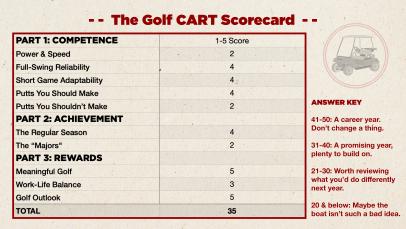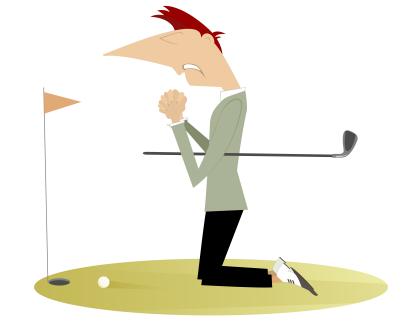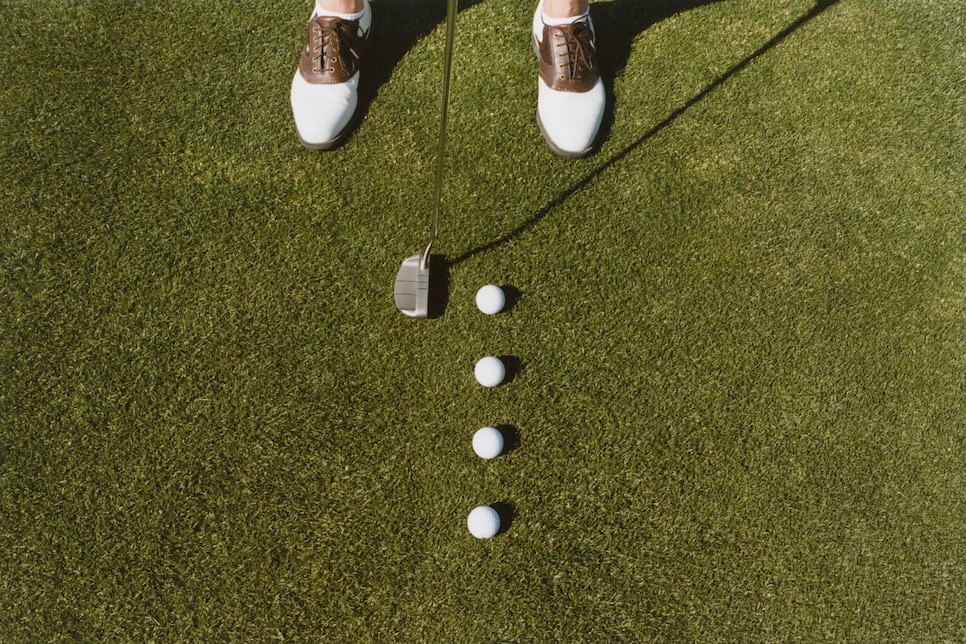Any discussion of bad golf habits can quickly spiral out of control considering how often golfers define their games by what they’d prefer not to do.
I’d love to not pull tee shots into someone’s backyard. It’d be great to not miss any more absurdly short putts.
You get the point. There are bad habits, and then there is just golf. While we can all rattle off tendencies that derail our performance and enjoyment, there are other factors perhaps more difficult to define but possibly easier to fix. As I continue to take inventory of my golf season (take my year-end assessment if you haven’t already), I’ve been giving thought to a few nagging habits that I’d benefit from shaking next year. I suspect some of these might resonate with you as well.
7. Stop coming into golf rounds cold
I am turning 50 next year, and though fortunate to be in decent physical condition, now contend with some general creakiness when getting either out of bed or my car. It’s apparent I need a better routine than flying into the golf course parking lot, rolling three putts on the practice green, then teeing off. My colleague Luke Kerr-Dineen recently wrote about ways to avoid disastrous starts to rounds, from making extra-long swings to hitting an extra club, all of which I’d benefit from as well. I also plan on carving out more time for the type of dynamic warmup older guys like me need.
6. Don’t jump to dumb conclusions
Golfers love to tell themselves stories, me especially. Hit two bad drives in a round and I am suddenly “driving it terribly.” Miss a few mid-range putts and “I can’t make anything.” One of my favorite golf books, Extraordinary Golf by Fred Shoemaker, notes how often we create narratives around our games without any basis. My goal in 2024, then, is to not make broad assumptions about a round based on a few seemingly isolated events. Whatever flaws there are in my game tend to get worse when I talk them into being.
More Low Net  Low Net How good was your golf year? Take our new test to find out
Low Net How good was your golf year? Take our new test to find out  Low Net Dumb golf myth: The key to overcoming nerves is to not care
Low Net Dumb golf myth: The key to overcoming nerves is to not care  Low Net A History Of Swing Thoughts 5. Limit my social media diet
Low Net A History Of Swing Thoughts 5. Limit my social media diet
There are plenty of studies about the damaging impact of social media on our brains and well-being. I agree with most of those, but here I’m talking about my golf swing. I am a sucker for the latest Instagram fix for my slightly over-the-top move, and the problem isn’t that any of those tips are bad—in fact, most end up helping. The problem is when I bounce from one fix to the next, I tend to inject a surplus of thought into my swing, and distance myself further from my instincts as an athlete. Next year I’m going with a less-is-more approach, on my phone, and on the course.
4. Pick a club and believe in it
There is this thing I do where I deliberate between two types of shots, grudgingly pick one, and inevitably hit a bad shot as a result. Our brains detest indecision, and in a golf context, I’ve learned that if my mind isn’t committed to the shot in front of me, my body isn’t going to cooperate either. The solution then is to pick a shot and not look back. Jack Nicklaus has often advocated making aggressive swings to conservative targets, which feels like a worthy alternative to a swing riddled with doubt.
3. Stop wasting money (and empty calories) on snacks
As an unapologetic but still reasonable golf gambler, I have come to accept that a round of golf might incur some additional costs, which is all the more reason I need to stop throwing away cash at the halfway house on granola bars, sports drinks, and the occasional beer. In 2024, I’m going to start packing my own snacks and water, and also do a better job of taking in food that aids performance. Luke wrote about one eating strategy called the ‘5-10-15 Rule’ which recommends eating something of value every five holes. Seems like a reasonable goal.
2. More structured practice sessions 
Sean Justice
As a longtime youth hockey coach, I always prepare a practice plan in advance so I’m not wasting valuable ice time. My practice sessions as a golfer aren’t nearly as disciplined. I throw some balls around the chipping green, pop in my headphones, and mostly play around until it’s time for dinner or my phone runs out of battery. As the golfer and coach Josh Nichols notes in this illuminating thread, golfers should approach practice sessions the way I do with my hockey players, with a structure and intent that prioritizes “long-term improvement over short-term results.”
1. No more steering
One of my worst tendencies as a golfer is, in the supposed interest of accuracy, I’ll start relying on just my arms instead of my whole body through the golf swing. I’ve come to learn how misguided this is, not only because of how much power I’m sacrificing, but also because it doesn’t really work. As Best Young Teacher Steve Buzza outlines, both power and accuracy rely on proper sequencing. So if you see me steering the ball on the golf course, you have permission to call me out.
This article was originally published on golfdigest.com



